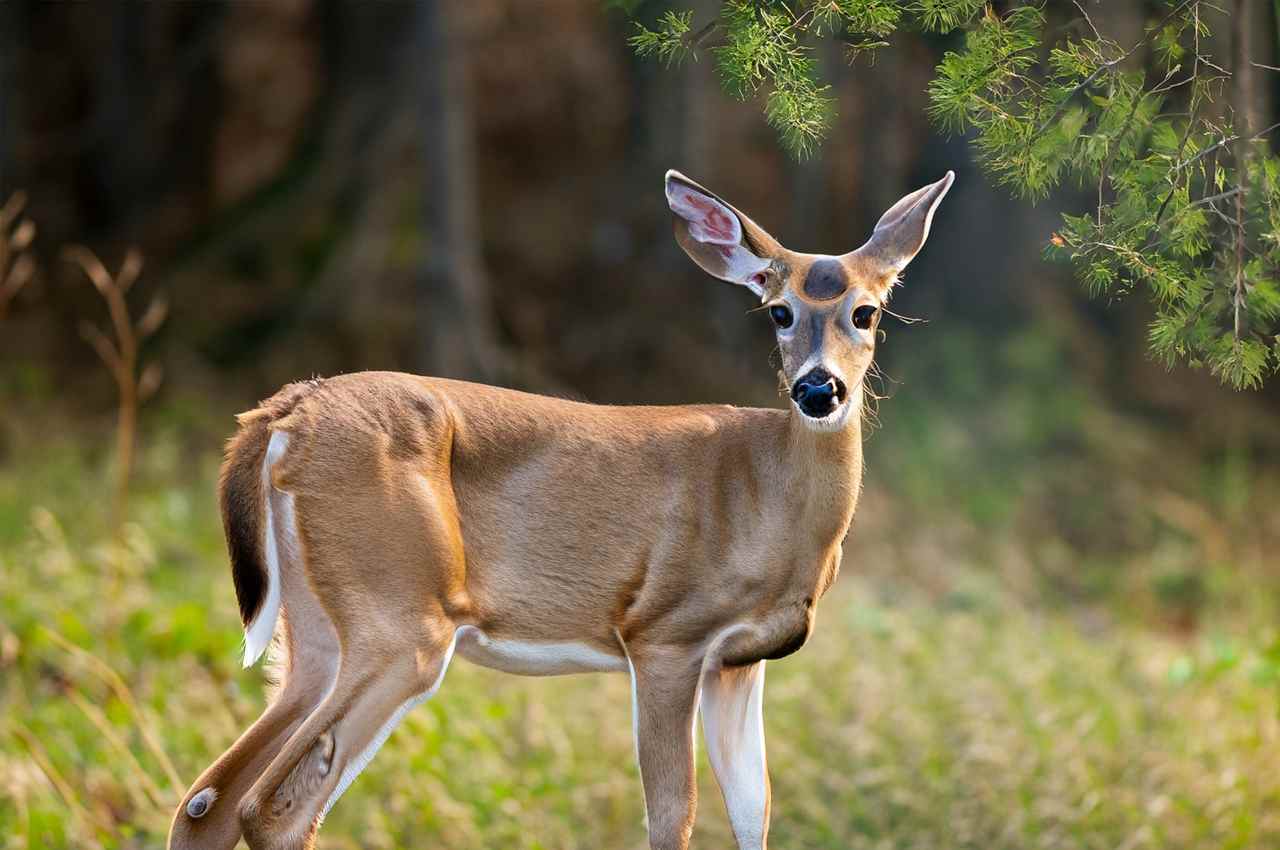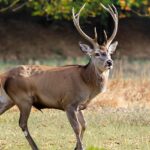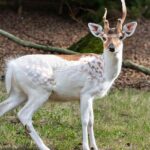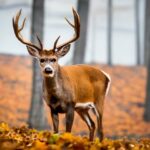Although answering “What is a female deer called” may seem simple, the nuanced nature in these names will keep you captivated. Deer may be found in numerous locations across the globe. Whether you watch nature programs or live close to the woods, you’ve probably seen these graceful animals. The names for male and female deer, however, vary. The popular names for female deer, their variations, and appropriate use are covered in this page.
What is a Female Deer Called?
A female deer is commonly called a “doe.” Alternative terms, such as “hind” for red deer and “cow” for elk, may be used, depending on the particular type of deer. Does are present in many deer species across the globe, including white-tailed deer, mule deer, red deer, fallow deer, and roe deer, among others. They are often smaller and lack antlers.
| Female Deer Names | Common Usage | Typical Species | Male Equivalent |
|---|---|---|---|
| Doe | Generic term | Small to medium-sized | Buck |
| Hind | Used for larger species | Red deer, Sika deer | Stag |
| Cow | Used for extra-large species | Moose, Elk, Caribou, Reindeer | Bull |
Even though these titles are sometimes used interchangeably in everyday communication, it’s important to understand the little variations since we’ll go into more specifics below.
Names of Female Deer by Species: A Quick Reference
The following table lists the proper names for female common deer species:
| Deer Species | Female Term |
|---|---|
| White-tailed deer | Doe |
| Mule deer | Doe |
| Roe deer | Doe |
| Fallow deer | Doe |
| Muntjac deer | Doe |
| Water deer | Doe |
| Red deer | Hind |
| Sika deer | Hind |
| Elk/Wapiti | Cow |
| Moose | Cow |
| Reindeer/Caribou | Cow |
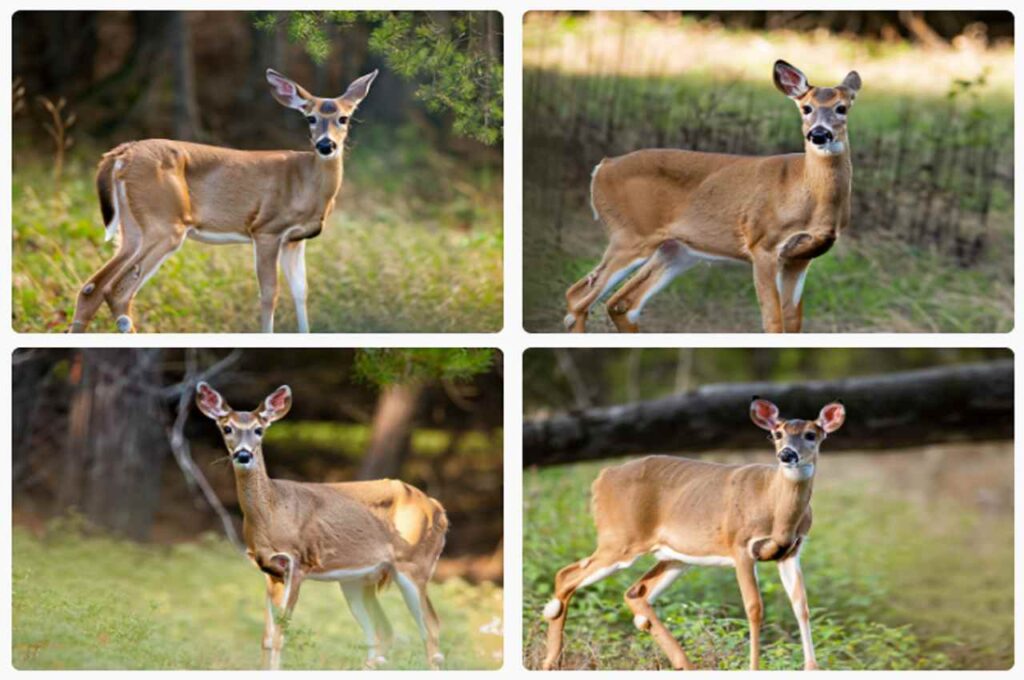
When Should You Call Female Deer “Doe”?
For species of small- and medium-sized deer, the word “doe” is suitable. The adult female equivalents of the following male deer are often referred to as having this trait:
- Buck (a white-tailed deer, for example)
- Roebuck (a kind of roe deer found in Europe)
The females of several particular deer species are correctly referred to as does, and these include:
- White-tailed deer
- Mule deer
- European roe deer
- Chinese water deer
- Muntjac deer
- Fallow deer
When referring to young female deer that have not reached maturity or when you are unclear of the actual species, the term “doe” is appropriate. Sometimes, the word “doe” is used to refer to all female deer, regardless of species.
Physical Characteristics of Does
- Does are smaller than the deer species known as cows and hinds. An mature mule deer doe weighs between 70 and 175 lbs, but a white-tailed doe typically weighs 90 to 310 lbs.
- Unlike reindeer cows, does not have antlers. A doe would only very rarely develop antlers, such as if their testosterone levels were very high.
- Usually gives birth to 1 to 3 fawns per year. They are fierce protectors of their young and are highly watchful moms.
When Should You Call Female Deer “Hind”?
Red deer and sika deer hinds are the only adult females to whom the word “hind” applies. It is used to refer to the feminine version of a “stag.”
Physical Characteristics of Hinds
- The size of a hind is greater than that of a doe. For instance, a roe deer doe weighs just 44–77 lbs, but a red deer hind averages 290–500 lbs.
- Hinds do not develop antlers like does do. When fighting, they establish dominance over other hinds using their front hooves and legs.
- Every year, hinds normally give birth to only one calf. Instead of fawns, the young are referred to as calves.
When to Refer to Female Deer as a “Cow”?
For extra-large deer species, when the males are referred to as bulls, “cow” is the proper phrase. Females of the following species are referred to as cows:
- Elk (also called wapiti)
- Moose
- Reindeer (also called caribou)
Physical Attributes of Cows
- Large, hefty deer, cows are. In comparison to elk cows, female moose cows may weigh anywhere between 290 and 600 pounds.
- Reindeer cows develop antlers, unlike other deer species. Their antlers, however, are much smaller than a bull’s.
- Every year, cows normally give birth to one to three calves. Instead of fawns, their progeny are referred to as calves.
After going over the basics, let’s look at some more in-depth questions about female deer terminology and behavior.
Behavior Differences Between Female and Male Deer
| Behavior | Male Deer | Female Deer |
|---|---|---|
| Aggression Levels | More aggressive | Less aggressive |
| Social Tendencies | Solitary | Form social groups |
| Mating Strategies | Gather harems | Mate selection |
| Parental Care | No care | Raise young alone |
| Habitat Use | Food-focused | Security-focused |
Female and male deer vary physically, but they also behave differently, particularly during mating season. Let’s look at some of the main differences in details:
Aggression Levels
- For the most of the year, male deer are far more aggressive than females. Females, on the other hand, may get ferociously protective of their fawns using their legs and hooves.
- To establish dominance, males engage in intimidating behaviors such antler threats and clashing. Females fight by kicking and standing on their hind legs since they lack horns.
Social Preferences
- Male deer normally live alone, with the exception of the rut. Rather of building relationships, they spar and fight for mates.
- Female deer, on the other hand, are gregarious herd animals. With the help of their kids and sometimes unrelated females, they create matriarchal communities.
Mating Approaches
- During the rut, dominant male deer assemble harems of females to mate with. Lower guys may not even have any partners.
- To mate, females don’t need to compete. They choose the strongest man who can pass on excellent genes as part of their approach.
Parental Care
- Male deer don’t take care of their young. After the rut, they depart to mate once again.
- Females nurture and protect fawns on their own, teaching them things like how to feed.
Habitat Use
- Outside of mating season, men and females often inhabit distinct habitats. While females require protection to raise offspring, men concentrate on food to gain strength.
- As you can see, throughout the year, male and female deer have quite distinct responsibilities to perform. Their actions have changed throughout time to better serve each stage of their development.
What are the Different Types of Deer?
After discussing terminology for female and male deer, let’s examine some of the most widespread deer species that may be found worldwide. Here is a brief summary emphasizing important information:
| Deer Types | Details |
|---|---|
| White-Tailed Deer | |
| Native to: | Americas |
| Male: | Buck |
| Female: | Doe |
| Young: | Fawns |
| Features: | Reddish brown coat, white underside, white tail with black tip |
| Mule Deer | |
| Native to: | Western North America |
| Male: | Buck |
| Female: | Doe |
| Young: | Fawns |
| Features: | Black-tipped tail, large mule-like ears |
| Elk (Wapiti) | |
| Native to: | North America, Asia |
| Male: | Bull |
| Female: | Cow |
| Young: | Calves |
| Features: | Tan coat, dark brown neck, large antlers on males |
| Caribou (Reindeer) | |
| Native to: | Arctic, Subarctic, mountainous regions |
| Male: | Bull |
| Female: | Cow |
| Young: | Calves |
| Features: | Stocky, short legs, antlers on both males and females |
| Red Deer | |
| Native to: | Europe, Asia, North Africa |
| Male: | Stag |
| Female: | Hind |
| Young: | Calves |
| Features: | Reddish brown coat, cream underside, long legs |
| Fallow Deer | |
| Native to: | Mediterranean Europe, Asia Minor |
| Male: | Buck |
| Female: | Doe |
| Young: | Fawns |
| Features: | Chestnut coat with white mottles, antlers on males |
| Roe Deer | |
| Native to: | Europe, Caucasus, Asia Minor |
| Male: | Roebuck |
| Female: | Doe |
| Young: | Kid, fawn |
| Features: | Reddish brown coat, no tail, black nose |
Just a few of the world’s more than 60 deer species are included here. As you can see, deer come in a variety of sizes and forms, each with its own special characteristics. But they all use the same terminology—bucks, stags, and bulls for males, and does, hinds, and cows for females—that was previously discussed.
The next time you see a deer, try to identify it down to the species and gender to see how well you know and appreciate it. Ultimately, conserving and protecting these iconic creatures for future generations requires an understanding of deer variety.
The Takeaway on Female Deer Terminology
The differences between the terms “doe,” “hind,” and “cow” when used to describe female deer should now be clearer thanks to this guide. Even while it’s OK to generalize and refer to them as “female deer,” learning the correct names for each species will help you learn more.
Knowing these names also makes it easier for us to appreciate the incredible variety among the several deer species found worldwide. So try to decide which phrase applies best the next time you encounter a female deer!
Frequently Asked Questions
What do you call a female deer with antlers?
Only males in the majority of deer species get antlers. Female reindeer and caribou are an exception, however. If a female of a different species of deer is seen with antlers, she probably has greater testosterone levels than usual. Rare examples like this are frequently referred to as “antlered does.” A hermaphrodite or pseudo-hermaphrodite deer may also have aberrant antler growth.
What is a baby female deer called?
Depending on the species, a newborn female deer is referred to as a doe fawn, hind fawn, or calf. Several unique instances
- White-tailed deer: doe fawn
- Mule deer: doe fawn
- Elk: calf
- Caribou: calf
- Moose: calf
The babies are referred to using the same terms as adult females of their species, but with the addition of “fawn” or “calf.”
Why are female moose called cows?
Due of their size, female moose are referred to as cows in the same way as cows are used to refer to female cattle. Traditionally, the phrases “bulls” and “cows” refer to large, hefty creatures. As one of the heaviest deer species, moose may weigh up to 800 pounds, hence the term “cow” is appropriate for the females.
How can you tell a reindeer is female?
On both males and females, look for antlers. However, compared to bulls, reindeer cow antlers are significantly shorter (less than 39 inches) and less branching. Additionally, cows often have shorter mane hair and smaller overall bodies. Their coats could need more time to transition from summer brown to winter white.
What is a female deer's behavior before giving birth?
A female deer’s behavior alters significantly in the weeks leading up to giving birth. She breaks away from the herd in search of a solitary place to give birth. She could construct a nest-like sleeping space out of grass or leaves. Her appetite wanes as labor draws near. Instead of eating, she will stay very close to the birthing place. She settles down to give birth to one to three fawns often as contractions begin.
Is there a difference between a doe, a hind, and a cow?
Although some individuals could use the phrases interchangeably in regular conversation, it’s critical to comprehend the appropriate context.
- Use “doe” only for small or medium-sized species.
- Use “hind” only for large red deer and sika deer.
- Use “cow” only for extra large deer like moose and elk.
Why do reindeer cows have antlers?
The only deer species in which antler growth occurs in both sexes is the reindeer. Cows’ antlers are thought by scientists to help spread out eating locations throughout the winter when food supplies are low.
What is a deer harem?
During mating season, a male deer will assemble a group of female deer (does, hinds, or cows) into a harem. To keep his group of females for reproductive purposes, the male will battle off rivals.
How can you differentiate a male deer from a female deer?
Antlers are the most visible distinction. In most species, antlers are only grown on male deer. But watch out for further cues:
- Males are typically larger
- Males have broader tracks as their legs are set wider apart
- Males have thicker necks during mating season
How often do deer give birth?
Depending on the species, gestation lasts between 200 and 286 days. The majority of does and hinds give birth to 1 to 3 fawns annually. 1-3 calves may be born to cows each year.
Mule deer does often give birth to only one fawn during their first pregnancy. They often deliver twins in subsequent pregnancies.
Conclusion
We hope that this comprehensive guide has been helpful in explaining the correct nomenclature for a female deer of different kinds. For those passionate about wildlife, the question, “What is a female deer called” has a straightforward answer: a “doe.”
A deeper connection may be made when one can tell a buck from a doe, a stag from a hind, and a bull from a cow. It also draws attention to the distinctions among the many species of deer that live on our varied world.
You may now identify and debate deer by gender and characteristics whether you see them in the wild, read about them, or look at pictures and videos.
- California Deer Hunting Guide: Seasons, Rules, Permits, and More - 26 June 2024
- Arkansas Deer Season 2024 [Schedules, Licenses, Bag Limits & More!] - 26 June 2024
- 2024 Arizona Deer Season New Dates & Rules! - 25 June 2024
